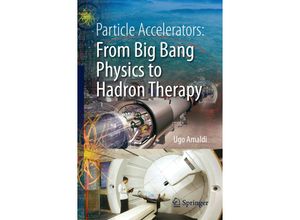Rather than focusing on the contributions of theoretical physicists to the understanding of the
subatomic world and of the beginning of the universe - as most popular science books on
particle physics do - this book is different in that firstly the main focus is on machine
inventors and builders and secondly particle accelerators are not only described as discovery
tools but also for their contributions to tumour diagnosis and therapy. The characters of
well-known (e.g. Ernest Lawrence) and mostly unknown actors (e.g. Nicholas Christofilos) are
outlined including many colourful quotations. The overall picture supports the author's motto:
Physics is beautiful and useful. Advance appraisal: Accelerators go all the way from the unique
and gargantuan Large Hadron Collider to thousands of smaller versions in hospitals and
industry. Ugo Amaldi has experience across the range. He has worked at CERN and has for many
years been driving the application ofaccelerators in medicine. This is a must-read introduction
to this frontier of modern technology written beautifully by a world expert. Frank Close
Professor of Physics at Oxford University author of The Infinity Puzzle This book should be
read by school teachers and all those interested in the exploration of the microcosm and its
relation to cosmology and in the use of accelerators for medical applications. With a light
hand and without formulae the author easily explains complicated matters spicing up the text
with amusing historical anecdotes. His reputation as an outstanding scientist in all the fields
treated guarantees high standards. Herwig Schopper former CERN Director General author of LEP
- The Lord of the Collider Rings at CERN This book tells the story of modern physics with an
unusual emphasis on the machine-builders who made it all possible and their machines. Learning
toaccelerate particles has enabled physicists to probe the subatomic world and gain a deeper
understanding of the cosmos. It has also brought numerous benefits to medicine from the
primitive X-ray machines of over a century ago to today's developments in hadron therapy for
cancer. Amaldi tells this story in a most fascinating way. Edward Witten Professor of
Mathematical Physics at the Institute for Advanced Study in Princeton Fields Medal (1990)

